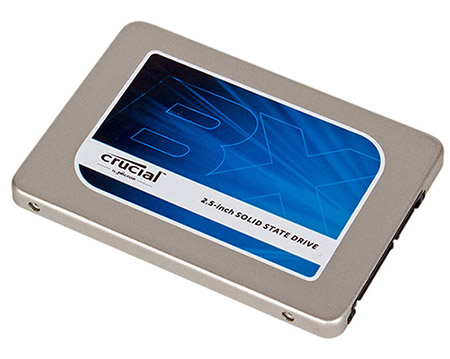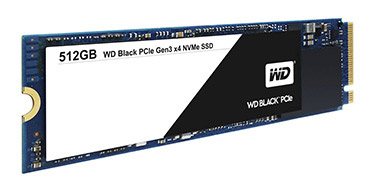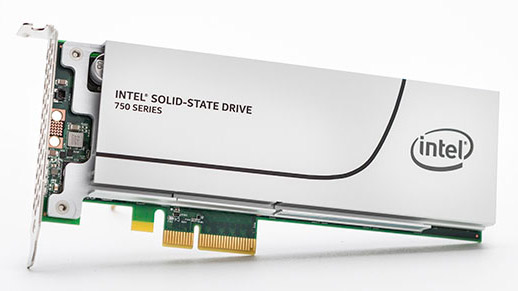Our Aim
To provide you with an overview on New And existing technologies, hopefully helping you understand the changes in the technology. Together with the overviews we hope to bring topical issues to light from a series of independent reviewers saving you the time And hassle of fact finding over the web.
We will over time provide you with quality content which you can browse and subscribe to at your leisure.
TekSpek 's

SSD Form Factors
Date issued:
The arrival of the solid-state drive (SSD) has revolutionised the speed at which modern PCs perform common tasks. This is because SSDs have no moving parts, compared to larger, bulkier mechanical drives, thus they store information on memory chips. This means that accesses, reads and writes are many, many times faster. Once you use a PC equipped with an SSD you won't want to go back.
It is universally agreed that SSDs are a good thing, but like many products within the PC ecosystem, there's an abundance of choice with respect to size, form factor and performance. This TekSpek will describe the various form factors that a modern SSD can take, and then provide guidance on what you should strive to get.
First, a primer. SSDs use what is known as NAND Flash memory on which to store information. The chips housing that information can be electrically erased and programmed by the controller, and the non-volatile nature of NAND Flash memory means that information isn't wiped when the drive is powered down. SSD chips have become denser and therefore more spacious over time, enabling larger and larger capacities without increasing the SSD footprint.
2.5in SATA

The most common desktop SSD uses a 2.5in drive and connects to the motherboard via a SATA cable. Power is provided by a specific cable coming from the PSU, and you can just about see both connectors on the right-hand side of the above-pictured Crucial BX-series SSD. These SSDs are typically between 7mm and 9mm tall, are housed in an aluminium enclosure, and weigh next to nothing. Four screws enable it to be attached either directly to a chassis or to an SSD sled.
Because this form factor relies on SATA as the interface between SSD and computer, mostly using the 6Gbps interface, the speed of the drive is limited to around 575MB/s for reads and writes. Modern SSD controllers and chips can likely work at a faster rate, which means you are leaving performance on the table when opting for such a form factor.
2.5" SATA SSDs are also common on older, larger laptops, where they attach directly to the motherboard via a dedicated link. These SSDs typically span the 120GB to 2TB capacity spectrum and are the usually the most cost-effective way of joining the SSD party.
M.2
The drive, if you excuse the pun, to small, more-efficient desktop PCs and rise of thin-and-light laptops has meant that the traditional 2.5in form factor is no longer the ideal fit in space-constrained scenarios. What's more, with modern SSDs able to achieve much higher speeds through greater access parallelism, the SATA interface has become too constricting. This is why the industry has moved on to what is known as the M.2 form factor, and while it can still be used to connect to the SATA backbone of a motherboard, performance drives are now using the direct-attached PCIe protocol instead. Let's explain both in more detail.

M.2 form factor SSDs are handy because they can carry a number of high-speed buses, including SATA, PCIe (over NVME and, lesser so, over AHCI) and USB 3.0. M.2 has a wide physical-footprint range, with module widths of 12, 16, 22 or 30mm, and lengths of 6, 26, 30, 38, 42, 60, 80 and 110 mm. Understanding an M.2 drive's physical size is easy because it is a combination of the two sets of numbers, therefore a 2280 M.2 is 22mm wide and 80mm long. Most desktop motherboards cater for the 22mm width and can accommodate drives up to 110mm long, whereas the exact M.2 footprint for laptops is determined by the manufacturer.
The ability of M.2 to interface directly with PCIe is what really sets it apart from a performance perspective. Premium M.2 drives, such as the WD Black shown above, use a 2280 form factor and connect to the motherboard via a PCIe Gen 3 x4 interface. What this means in practise is that the protocol can transfer at close to 4,000MB/s, enabling drives to really stretch their controller and NAND's legs. As an example, the above WD has sequential read and write speeds of 2,050MB/s and 800MB/s, respectively, or up to 4x the speed of SATA.
Smaller form factors and faster speeds make M.2 PCIe the logical choice for any performance PC, and they are particularly handy for the laptop market where, by their very nature, space is already confined.
PCIe
As the name suggests, PCIe-based SSDs attach directly to the PCIe slots on a motherboard. Such drives are more common in the workstation and enterprise market where chassis and motherboard space is less of a problem.

Most of these drives still use a PCIe Gen 3 x4 interface, just like M.2, but the larger form factor is useful as it allows for more chips/capacity to be mounted on to a PCB and more room for cooling, ensuring the drive(s) run at full speed all the time.
Speaking of capacity, it is possible to get a PCIe-riding drive in flavours of up to 2TB, which is ideal if you want supremely fast access to large datasets or huge files.
Another advantage of going down this route is that more drives can be added to a system: there are usually only two full-speed M.2 slots on most motherboards, and these share their bandwidth with other devices. Having full, unfettered access to dedicated PCIe lanes enables multiple drives like the Intel 750 Series to be installed in a high-end consumer PC or workstation/server without lane-sharing issues cropping up.
PCIe-based SSDs are the optimum performance solution if space and cost is less of an issue. This is absolutely true when one looks at the recent PCIe-based Intel Optane drives that use 3D Xpoint technology instead of NAND. These drives are faster still.
Other Form Factors
2.5in SATA, M.2 and PCIe constitute the lion's share of SSD form factors, but there are a couple of others that still have limited traction. U.2 is sometimes seen on premium motherboards, notably from Asus, and it also connects to the system via PCIe Gen 3 x4, just like decent M.2 drives, yet the larger physical size of U.2, mimicking 2.5in drives, ensures that there is more chance of higher capacities. However, with increasing capacity available from fewer and fewer NAND chips, thus not requiring as much space on the PCB as before, the rise of U.2 has been hampered by leading-edge M.2.
mSATA is the progenitor of modern-day M.2. As the name suggests, mSATA is a smaller version of a 2.5in SATA drive. Often seen in laptops from a few years ago, plus select motherboards released between 2010 and 2015, it has the same SATA 6Gbps speed limitation as 2.5in SATA. It has all-but been superseded by M.2 in its various flavours.
There you have it. The three main SSD form factors are M.2, ideally using the NVMe protocol, PCIe and, the slowest of the bunch, 2.5in SATA. Most modern motherboards feature at least one M.2 slot, usually connected to the chipset via a speedy PCIe Gen 3 x4 link, and we would recommend users going down this route in order to get the most out of their system. Appreciating that capacities still lag behind what's possible with the larger 2.5in SATA form factor, it makes sense to use it has the primary storage drive that holds the operating system and key programs. For example, a premium PC can be equipped with a 256GB M.2 PCIe boot/operating system drive and a 1TB SATA-connected storage drive.
As always, Scan retails a wide range of SSD drives in all form factors.